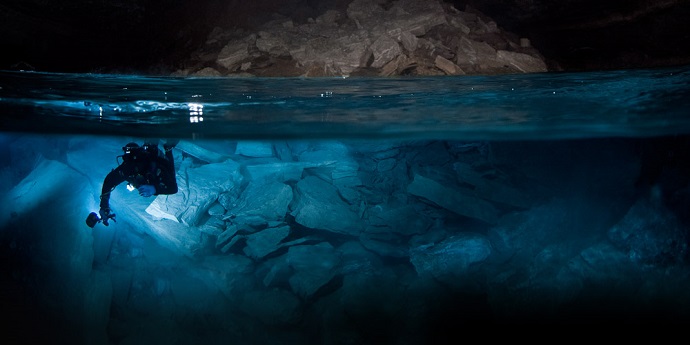A lot of beautiful diving sites have temperatures far too low for divers to stay comfortable underwater for longer time periods, even during the summer. Imagine yourself diving in the Great Barrier Reef, admiring the sun’s rays piercing through the water above you, but wishing you were warm enough to stay a bit longer.
No matter the circumstances, being cold is never fun. Moreover, losing body heat while diving can be dangerous. For that reason, it’s important that you have the right gear to help you stay comfortable and more importantly, safe. Here are a few pieces of diving equipment that are meant just for that purpose.

Dive Hoods
Whether you’re diving in warm or cold water doesn’t really matter to the human body – you lose heat. Most of the heat escapes through your head, even when the water is seemingly pleasant to stay in and only a dozen degrees cooler than your body temperature.
Most dive hoods are made from neoprene, and are designed specifically for cold or warm water. Thicker neoprene hoods that cover your neck and head are best for cold water diving. And the bigger the bib attached to the neck is, the less water will transfer and the warmer you’ll be. On the other hand, warm water hoods are designed much less cumbersome, but they leave you more exposed.
When buying a dive hood, make sure it’s not too loose. This is very important especially when you’re buying a hood for cold water diving. It should feel snug around your jaw and cheeks, as well as cover most of your forehead. However, it shouldn’t feel to tight either, as it can be uncomfortable around the throat and your facial area.
Dive Gloves
A lot of people think that picking a pair of gloves for diving is simple. Well, they couldn’t be more wrong – you need to consider a lot of things when buying gloves, like the warmth they provide, the comfort and fit aspect, as well as their dexterity and durability. Most dive gloves aren’t designed to keep your hands dry, but instead, they’re designed much like your wet suit – to hold body heat near your skin.
There are two general types of gloves – ones designed with wrist straps, and ones without. You can adjust the tightness of the gloves that have straps, but they might be harder to put on. On the other hand, as long as a strapless glove fits, that’s all it counts. If they are too tight, they might let in more water. Finding the perfect pair of gloves can take some time – just like finding the perfect pair of jeans.
Dive Boots
Unless you spend most of your time diving in full foot fins, you’re going to need dive boots. Not only do they protect you against sharp surfaces and hot sand on the shore, they also keep your feet warm in cold water. Selecting the right boots is similar to selecting the right gloves – you need to pay attention to the warmth they provide, their level of comfort, durability as well as whether or not they are the perfect fit.
As is the case with most other diving gear pieces, neoprene boots are the right choice due to the different thickness (and therefore warmth) variations. Ensuring they fit your legs is also essential. They shouldn’t be too tight to stop blood from flowing freely to your feet, and they shouldn’t be too loose, so that water doesn’t enter. And lastly, they should be durable enough so that you can stand on rocks without worrying about tearing them and hurting your feet.



